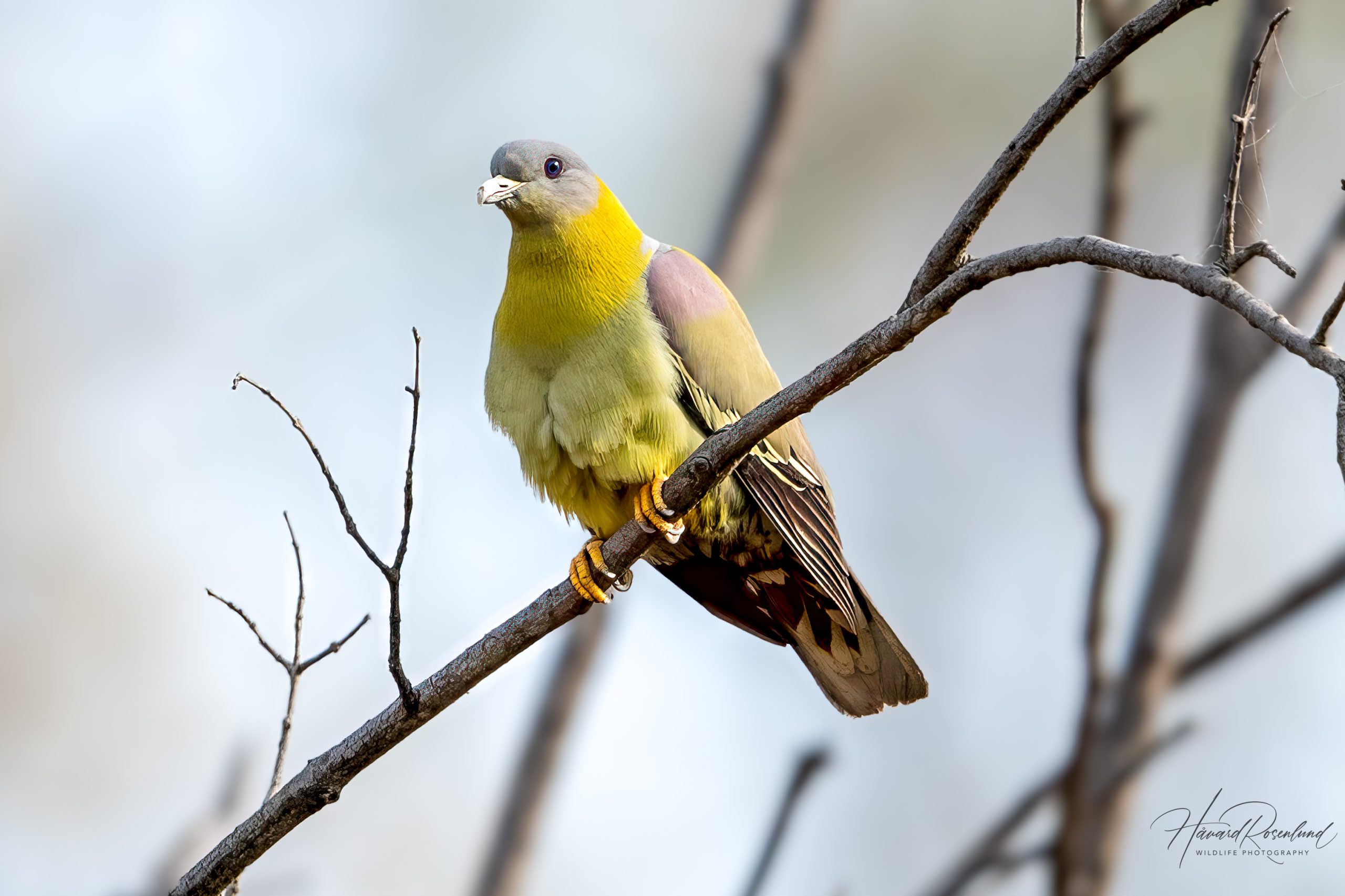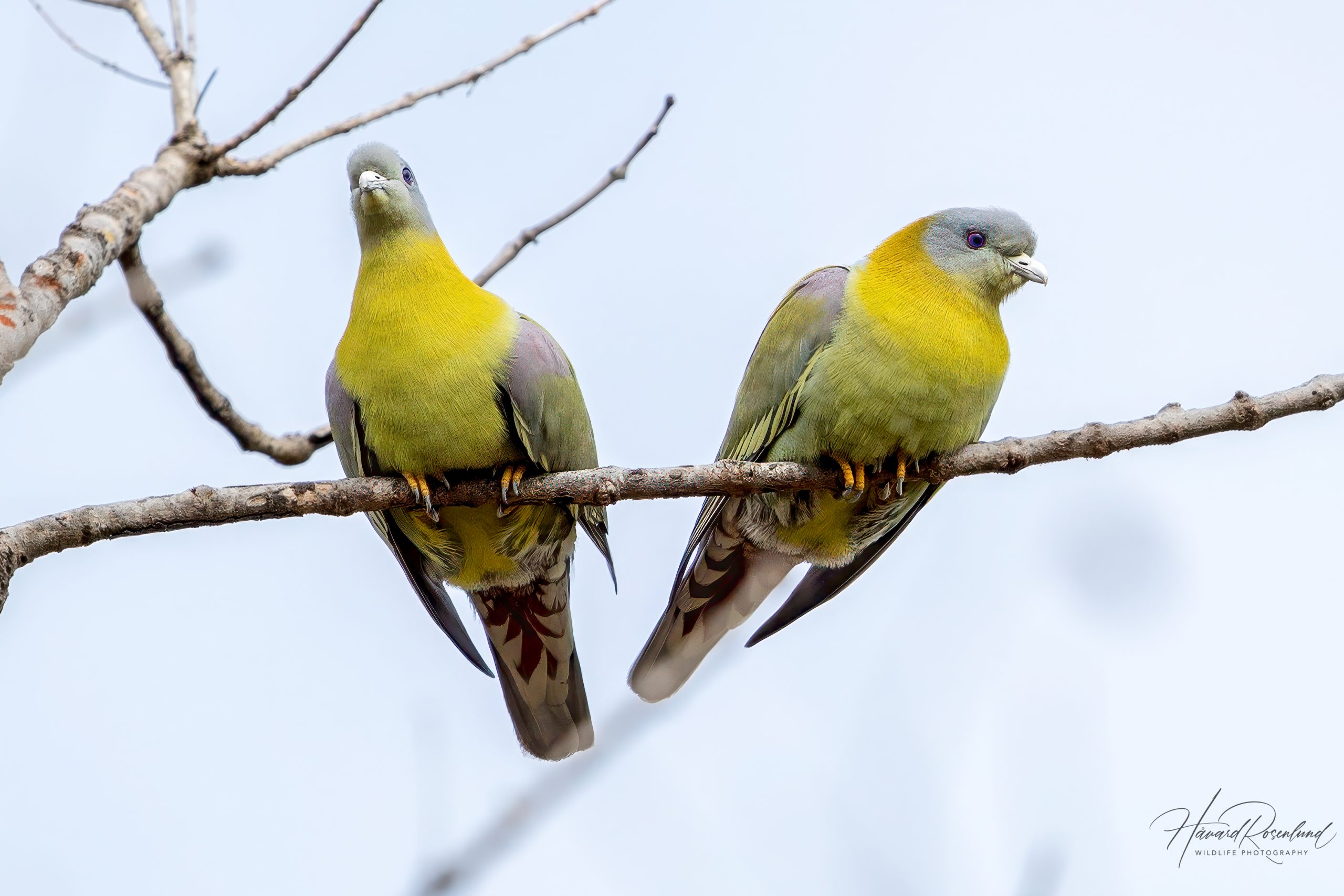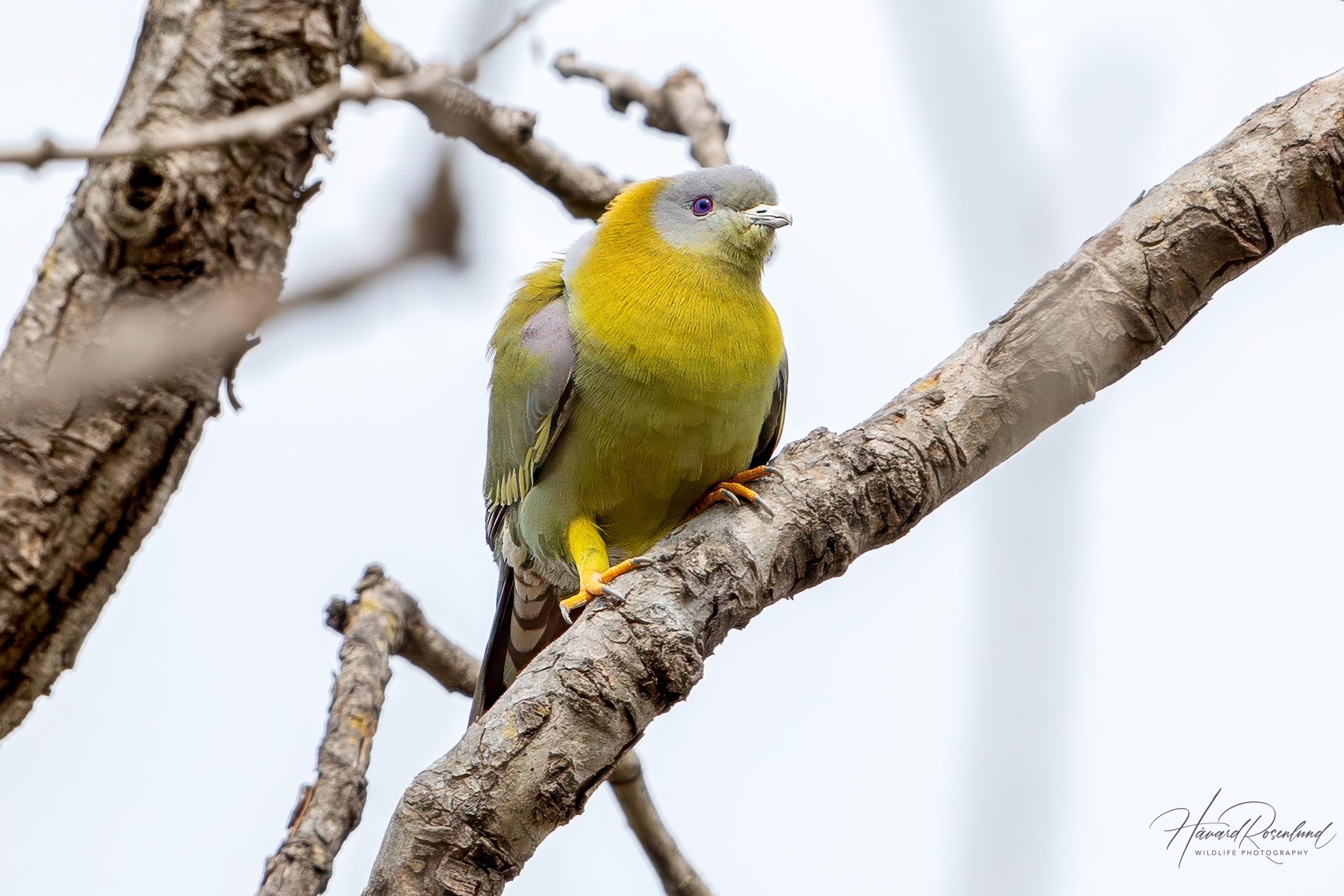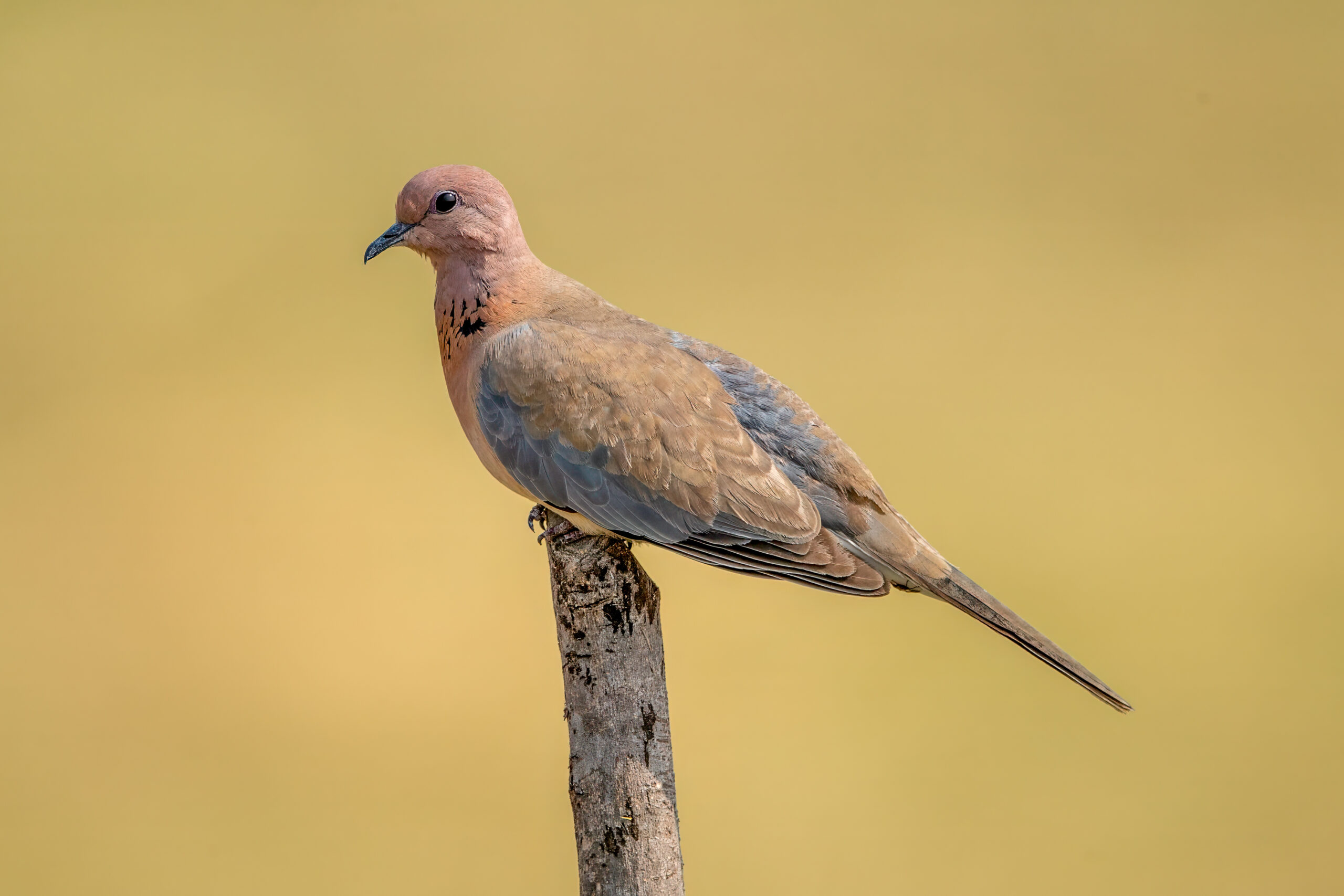Description
The yellow-footed green-pigeon (Treron phoenicopterus) is a colorful species of pigeon commonly found across the Indian subcontinent and Southeast Asia. This pigeon measures approximately 29-33 cm (11.4-13.0 in) in length, with a wingspan of 45-50 cm (18-20 in). The bird has distinctive yellow legs, green plumage with a yellowish chest and neck, and purple shoulder patches, which are alle unique identifiers that set it apart from similar species. These pigeons are often be seen in flocks, especially during the fruiting season when food is abundant. Unlike many other pigeon species, the yellow-footed green-pigeon is relatively silent, with a soft, low call that is rarely heard.
Diet & habitat
The yellow-footed green-pigeon inhabits a variety of habitats, including deciduous forests, scrublands, plantations, and urban gardens. It primarily feeds on fruits, particularly figs, and berries, which it plucks from trees with precision. The bird also consumes seeds and occasionally flowers. Its feeding behavior is marked by a methodical and deliberate approach, often hanging upside down to reach its food.
Nesting
Breeding season for the yellow-footed green-pigeon generally occurs from March to June, although this can vary depending on the region. The species is known for its simple nesting habits, typically building a flimsy platform of twigs in trees or bushes. The female lays one to two eggs, which are incubated by both parents for about 12-14 days. After hatching, both parents care for the chicks until they fledge approximately 10-12 days later. The rapid growth and fledging period ensure that the young are quickly independent and able to survive on their own.
Status
The yellow-footed green-pigeon is classified as least concern on the IUCN Red List, indicating a stable population without significant immediate threats. However, habitat destruction due to deforestation and urbanization poses potential long-term risks.









